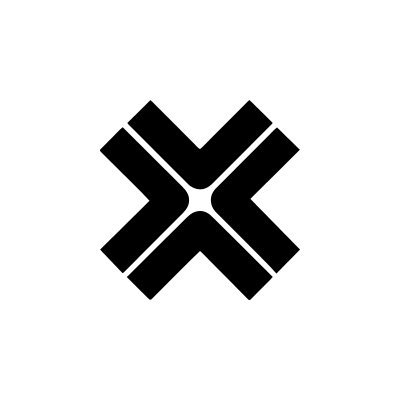Scaling solved fees, now we need to solve fragmentation.
But ETH doesn’t need more bridges, it needs one standard.
ERC-7786 delivers that ⤵️
Schalen via L2's is het grootste probleem van Ethereum geworden:
50+ geïsoleerde rollups met gefragmenteerde liquiditeit en complexe bruggen.
Er bestaan cross-chain oplossingen, maar we hebben standaarden nodig om ze te verenigen.
Hier leest u hoe interoperabiliteitsstandaarden ETH nieuw leven kunnen inblazen:
Laten we eerst begrijpen hoe we hier zijn gekomen.
Ethereum had tijdens de laatste cyclus een schaalprobleem. De gaskosten piekten op $ 100+ per transactie toen gebruikers streden om blokruimte.
Layer 2 rollups verschenen om dit probleem op te lossen, en ze werkten.
Base, Arbitrum, Optimism en tientallen anderen hebben met succes de capaciteit van Ethereum uitgebreid, waarbij de kosten nu in centen worden geteld.
Maar ze creëerden ook een nieuw probleem: fragmentatie.
Gebruikers moeten nu navigeren tussen geïsoleerde ecosystemen die niet met elkaar praten. De impact in de echte wereld is aanzienlijk. Stel je voor dat je geld hebt op Optimism, maar een app op Base wilt gebruiken. Je moet:
• Zoek een brug
• Betaal dure kosten
• Wacht op finaliteitsperioden
• Beheer meerdere wallets
De gebruikerservaring is op zijn zachtst gezegd uitdagend. Maar er worden momenteel interoperabiliteitsstandaarden ontwikkeld om het Ethereum-ecosysteem te verenigen.
Over het algemeen ben ik geen fan van standaarden; Het gebrek aan standaarden in deze situatie heeft echter geleid tot herhaalde knelpunten voor ontwikkelaars.
Laten we er een paar opsplitsen:
1. De eerste interoperabiliteitsstandaard op onze lijst is Across en de intentiestandaard van Uniswap (ERC-7683).
Met intenties kunnen gebruikers uitdrukken wat ze willen (swap token X op @base
voor token Y op @arbitrum), en dan zullen "oplossers" concurreren om de bestelling op het meest geoptimaliseerde pad uit te voeren.
Het werkt als volgt:
Wanneer u een cross-chain swap aanvraagt, concurreert een gedecentraliseerd netwerk van "oplossers" om uw bestelling uit te voeren. Ze zorgen voor de liquiditeit en zorgen voor een snelle afhandeling, terwijl de uiteindelijke afwikkeling later plaatsvindt via beveiligde cross-chain messaging.
Dit is fundamenteel anders dan traditionele bruggen, waarbij:
• Je vergrendelt tokens in een contract op keten A
• Wachten op bevestiging (vaak minuten of uren)
• Koop dan ingepakte tokens op ketting B
Intent-based benaderingen stellen de gebruikerservaring op de eerste plaats, en de afwikkeling vindt daarna plaats.
De ERC-7683-standaard is bedoeld om ervoor te zorgen dat protocollen informatie delen in een consistente taal, zodat elke oplosser in het gedecentraliseerde netwerk de bestelling kan begrijpen en uitvoeren.
En ERC-7683 is niet de enige standaard die cross-chain fragmentatie probeert aan te pakken.
2. Er zijn meerdere andere standaarden die geïsoleerde rollups aan elkaar proberen te naaien.
Hier is een kort overzicht:
• RIP-7755: Maakt betrouwbare transacties tussen rollups mogelijk via een toestemmingsloos netwerk van fulfillers.
• RIP-7859: Stelt oorsprongsinformatie van laag 1 bloot in laag 2-omgevingen, waardoor de gegevensverificatie tussen de ketens wordt verbeterd.
• ERC-7828: Introduceert ketenspecifieke adressen in ENS, waardoor verwarring wordt verminderd bij het verzenden van activa over verschillende ketens.
Elk van deze normen is een stap in de richting van het oplossen van geïsoleerde ecosystemen. Ze hebben echter allemaal te maken met hetzelfde onderliggende probleem:
We hebben nog steeds een gemeenschappelijke taal nodig voor ketens om in de basislaag te communiceren. Zonder dat blijft de versnippering bestaan.
Om de app-laag van Ethereum echt over ketens te schalen, hebben de bovenstaande standaarden en ontwikkelaars een gedeelde taal nodig.
3. Dat brengt ons bij ERC-7786, een voorgestelde universele interface voor berichten tussen blockchains.
Het is alsof je het eens wordt over een postadresformaat, zodat UPS, FedEx of DHL allemaal je pakket kunnen bezorgen.
Voorgesteld door @OpenZeppelin en @interop_labs (de ontwikkelaar van het @axelar Network), is ERC-7786 minimaal van ontwerp, gebouwd om lichtgewicht en modulair te zijn. Het doel is om vendor lock-in te verminderen en echte cross-chain native applicaties mogelijk te maken.
ERC-7786 standaardiseert:
• Codering van berichtvelden
• Logica voor verzenden en ontvangen
• Veiligheidsgaranties
• Optionele "attributen" voor protocolspecifiek gedrag
De standaard is ontworpen om flexibel te zijn, zodat ontwikkelaars één keer code kunnen schrijven en deze in meerdere ketens kunnen implementeren (inclusief L2's en niet-EVM-omgevingen).
"Ketenabstractie" blijft het uiteindelijke doel:
• Gebruikers hoeven niet te weten op welke keten ze zich bevinden.
• Portefeuilles moeten overal werken.
• Activa moeten vrij kunnen bewegen.
Op dit moment zit het kapitaal inefficiënt opgesloten in tientallen overbruggingscontracten. Ondertussen verspillen ontwikkelaars tijd aan het leren van meerdere propriëtaire interfaces, terwijl gebruikers de kosten van complexiteit dragen.
Standaardisatie zorgt voor een opkomend tij dat alle boten optilt.
In de geschiedenis van de technologie versnellen open standaarden voortdurend de groei van ecosystemen.
TCP/IP verenigde het internet, HTTP standaardiseerde het web en nu zullen interoperabiliteitsstandaarden het ecosysteem van Ethereum herenigen.

5,79K
0
De inhoud op deze pagina wordt geleverd door derden. Tenzij anders vermeld, is OKX niet de auteur van het (de) geciteerde artikel(en) en claimt geen auteursrecht op de materialen. De inhoud is alleen bedoeld voor informatieve doeleinden en vertegenwoordigt niet de standpunten van OKX. Het is niet bedoeld als een goedkeuring van welke aard dan ook en mag niet worden beschouwd als beleggingsadvies of een uitnodiging tot het kopen of verkopen van digitale bezittingen. Voor zover generatieve AI wordt gebruikt om samenvattingen of andere informatie te verstrekken, kan deze door AI gegenereerde inhoud onnauwkeurig of inconsistent zijn. Lees het gelinkte artikel voor meer details en informatie. OKX is niet verantwoordelijk voor inhoud gehost op sites van een derde partij. Het bezitten van digitale activa, waaronder stablecoins en NFT's, brengt een hoge mate van risico met zich mee en de waarde van deze activa kan sterk fluctueren. Overweeg zorgvuldig of de handel in of het bezit van digitale activa geschikt voor je is in het licht van je financiële situatie.


